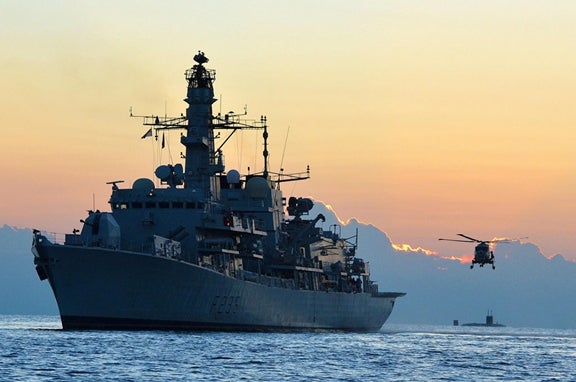
The UK Royal Navy and Kuwaiti Navy have successfully conducted a series of exercises in the Northern Gulf, intended to boost interoperability and strengthen cooperation between the two navies.
HMS Monmouth (F235), the Royal Navy’s sixth Type 23 Duke-class frigate, and Kuwaiti Navy’s Um Al Maradim-class missile attack craft, Al Ahmadi (P3719) participated in the exercise.
During the Officer of the Watch drills, both vessels respective bridge teams demonstrated their signalling and ship-handling skills.
As part of the exercise, Kuwaiti Air Force’s two Boeing-built AH-64D Apache longbow helicopters conducted low level simulated air attacks over the Type 23 frigate.
Kuwait’s Eurocopter-built AS332 Super-Puma search-and-rescue helicopter also performed winching exercises aboard the HMS Monmouth’s flight deck and demonstrated interoperability among the two forces.
HMS Monmouth commanding officer commander Gordon Ruddock said: "The Royal Navy and Kuwaiti Navy have a very strong relationship, working closely together in the region to provide maritime security and stability to the Gulf."
Currently, HMS Monmouth is deployed to enhance maritime security in the Gulf region, which the Royal Navy has been maintaining for more than 30 years.
Capable of accommodating a crew of 185, the 133m-long Duke-class frigates have been designed to provide anti-submarine warfare (ASW) and anti-surface warfare (ASuW) capabilities.
Powered by two diesel engines and two water jet systems, the Construction Mecaniques de Normandie (CMN) built Al Ahmadi craft is 42m-long and 8.2m-wide and has a full load displacement capacity of 245t.
Image: HMS Monmouth conducting missions at sea. Photo: courtesy of Royal Navy.





